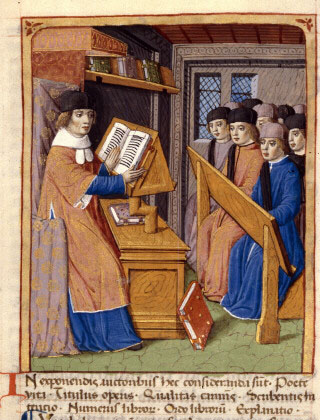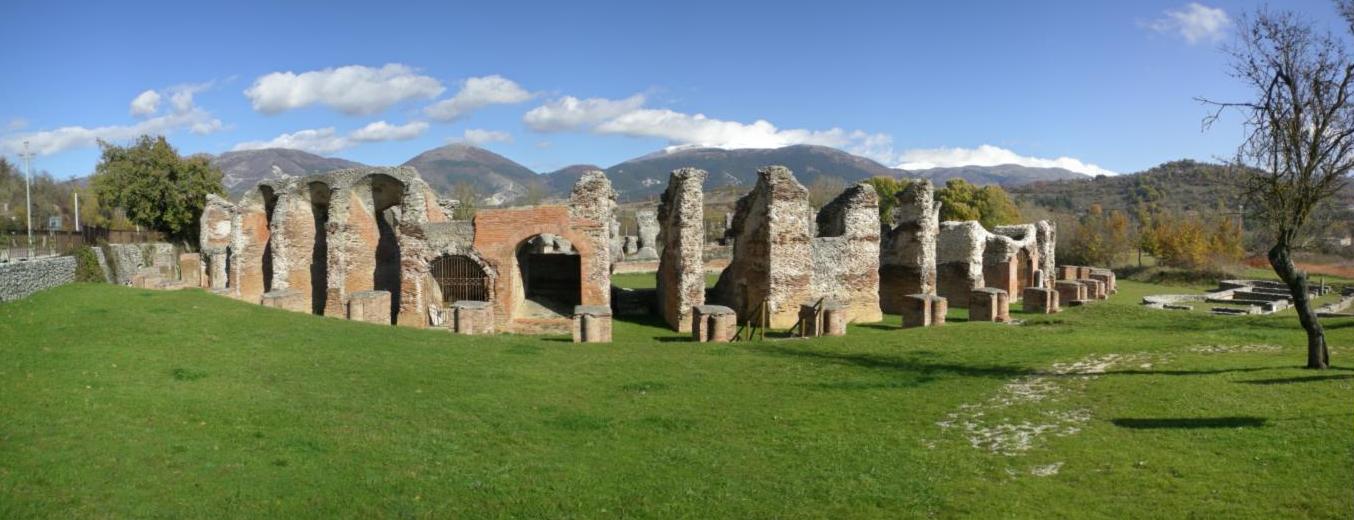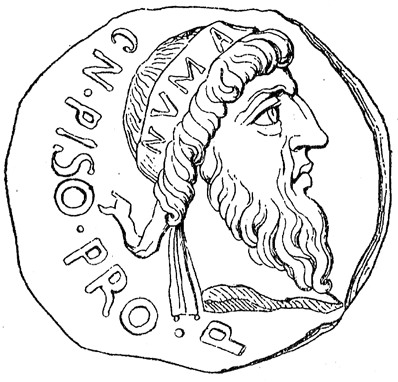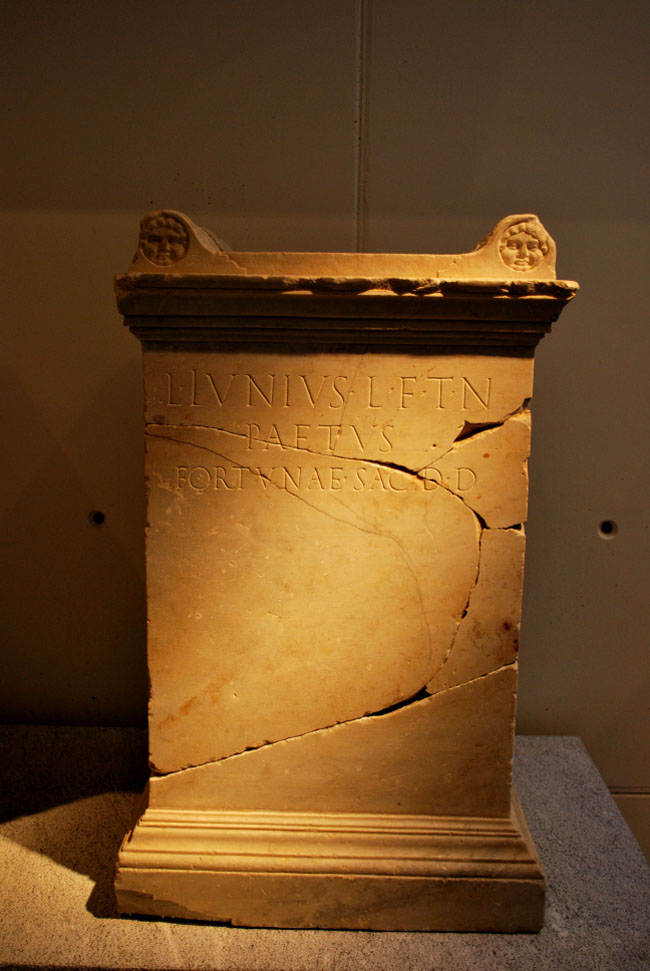|
Mola Salsa
In Religion in ancient Rome, ancient Roman religion, ''mola salsa'' ("salted flour") was a mixture of Granularity, coarse-ground, toasted emmer flour and salt prepared by the Vestal Virgins and used in every official sacrifice. It was sprinkled on the forehead and between the horns of animal sacrifice, animal victims before they were sacrificed, as well as on the altar and in the Sacred fire of Vesta, sacred fire. It was a common offering to the household hearth. Maurus Servius Honoratus, Servius describes the substance as ''Glossary of ancient Roman religion#pius, pius'' (perhaps "reverently prepared" in this sense) and ''Glossary of ancient Roman religion#castus, castitas, castus'' ("ritually pure"). The ''mola salsa'' was so fundamental to sacrifice that "to put on the ''mola''" (Latin ''immolare'') came to mean "to sacrifice", hence English "wikt:immolation, immolation". Its use was one of the numerous religious traditions ascribed to Numa Pompilius, the Sabine second king of ... [...More Info...] [...Related Items...] OR: [Wikipedia] [Google] [Baidu] |
Cere - MI - Museo Archeologico - 25-7-2003 - Fotomia
The beak, bill, or Rostrum (anatomy), rostrum is an external anatomical structure found mostly in birds, but also in turtles, non-avian dinosaurs and a few mammals. A beak is used for pecking, wikt:grasp#Verb, grasping, and holding (in wikt:probe#Verb, probing for food, eating, manipulating and carrying objects, predation, killing prey, or fighting), preening, Courtship in animals, courtship, and feeding young. The terms ''beak'' and ''Rostrum (anatomy), rostrum'' are also used to refer to a similar mouth part in some ornithischians, pterosaurs, cetaceans, dicynodonts, rhynchosaurs, anuran tadpoles, monotremes (i.e. echidnas and platypuses, which have a bill-like structure), Sirenidae, sirens, Tetraodontidae, pufferfish, billfishes, and Cephalopod beak, cephalopods. Although beaks vary significantly in size, shape, color and texture, they share a similar underlying structure. Two bony projections–the upper and lower mandibles–are covered with a thin keratinized layer of epider ... [...More Info...] [...Related Items...] OR: [Wikipedia] [Google] [Baidu] |
Maurus Servius Honoratus
Servius, distinguished as Servius the Grammarian ( or ), was a late fourth-century and early fifth-century grammarian. He earned a contemporary reputation as the most learned man of his generation in Italy; he authored a set of commentaries on the works of Virgil. These works, ("Exposition on Three Works of Virgil"), ("Commentaries on Virgil"), ("Commentaries on the Works of Vergil"), or ("Commentaries on the Poems of Virgil"), constituted the first incunable to be printed at Florence, by Bernardo Cennini, in 1471. In the ''Saturnalia'' of Macrobius, Servius appears as one of the interlocutors; allusions in that work and a letter from Symmachus to Servius indicate that he was not a convert to Christianity. Name The name Servius also appears as Seruius owing to the unity of the Latin letters V and U from antiquity until as late as the 18th century. Many medieval manuscripts of Servius's commentaries give him the praenomen Marius or Maurus and the cognomen Honoratu ... [...More Info...] [...Related Items...] OR: [Wikipedia] [Google] [Baidu] |
Roman Festivals
Festivals in ancient Rome were a very important part of Roman religious life during both the Republican and Imperial eras, and one of the primary features of the Roman calendar. ''Feriae'' ("holidays" in the sense of "holy days"; singular also ''feriae'' or ''dies ferialis'') were either public ''(publicae)'' or private ''( privatae)''. State holidays were celebrated by the Roman people and received public funding. Games ''(ludi)'', such as the Ludi Apollinares, were not technically ''feriae'', but the days on which they were celebrated were '' dies festi'', holidays in the modern sense of days off work. Although ''feriae'' were paid for by the state, ''ludi'' were often funded by wealthy individuals. ''Feriae privatae'' were holidays celebrated in honor of private individuals or by families. This article deals only with public holidays, including rites celebrated by the state priests of Rome at temples, as well as celebrations by neighborhoods, families, and friends held ... [...More Info...] [...Related Items...] OR: [Wikipedia] [Google] [Baidu] |
Vestalia
Vestalia was a Roman religious festival in honor of Vesta, the goddess of the hearth and the burning continuation of the sacred fire of Rome. It was held from 7–15 June, and was reserved as a women's-only event. Domestic and family life in general were represented by the festival of the goddess of the house and of the spirits of the storechamber — Vesta and the Penates — on ''Vestalia''. On the first day of festivities the ''penus Vestae'' ('' sanctum sanctorum'' of the temple of Vesta which was usually curtained off) was opened, for the only time during the year, at which women offered sacrifices. As long as the curtain remained open, mothers could come, barefoot and disheveled, to leave offerings to the goddess in exchange for a blessing to them and their family. The animal consecrated to Vesta, the donkey, was crowned with garlands of flowers and bits of bread on 9 June. Ovid says that donkeys were adorned with necklaces of bread-bits in memory of the myth where Vesta ... [...More Info...] [...Related Items...] OR: [Wikipedia] [Google] [Baidu] |
Collegium (ancient Rome)
A (: ) or college was any association in ancient Rome that acted as a legal entity. Such associations could be civil or religious. The word literally means "society", from ("colleague"). They functioned as social clubs or religious collectives whose members worked towards their shared interests. These shared interests encompassed a wide range of the various aspects of urban life; including political interests, cult practices, professions, trade, and civic services. The social connections fostered by ''collegia'' contributed to their influence on politics and the economy; acting as lobbying groups and representative groups for traders and merchants. Some ''collegia'' were linked to participating in political violence and social unrest, which resulted in the suppression of social associations by the Roman government. Following the passage of the '' lex Julia'' during the reign of Julius Caesar as consul and dictator of the Roman Republic (49–44 BC), and their reaffirmation d ... [...More Info...] [...Related Items...] OR: [Wikipedia] [Google] [Baidu] |
King Of Rome
The king of Rome () was the ruler of the Roman Kingdom, a legendary period of Roman history that functioned as an elective monarchy. According to legend, the first king of Rome was Romulus, who founded the city in 753 BC upon the Palatine Hill. Seven legendary kings are said to have ruled Rome until 509 BC, when the last king was overthrown. These kings ruled for an average of 35 years. The kings after Romulus were not known to be dynasts and no reference is made to the hereditary principle until after the fifth king Tarquinius Priscus. Consequently, some have assumed that the Tarquins' attempt to institute a hereditary monarchy over this conjectured earlier elective monarchy resulted in the formation of the Republic. Overview Early Rome was ruled by the king (''rex''). The king possessed absolute power over the people; no one could rule over him. The Senate was a weak oligarchy, capable of exercising only minor administrative powers, so that Rome was ruled by its king w ... [...More Info...] [...Related Items...] OR: [Wikipedia] [Google] [Baidu] |
Sabine
The Sabines (, , , ; ) were an Italic people who lived in the central Apennine Mountains (see Sabina) of the ancient Italian Peninsula, also inhabiting Latium north of the Anio before the founding of Rome. The Sabines divided into two populations just after the founding of Rome, which is described by Roman legend. The division, however it came about, is not legendary. The population closer to Rome transplanted itself to the new city and united with the preexisting citizenry, beginning a new heritage that descended from the Sabines but was also Latinized. The second population remained a mountain tribal state, coming finally to war against Rome for its independence along with all the other Italic tribes. Afterwards, it became assimilated into the Roman Republic. Etymology The Sabines derived directly from the ancient Umbrians and belonged to the same ethnic group as the Samnites and the Sabelli, as attested by the common ethnonyms of ''Safineis'' (in ancient Gr ... [...More Info...] [...Related Items...] OR: [Wikipedia] [Google] [Baidu] |
Numa Pompilius
Numa Pompilius (; 753–672 BC; reigned 715–672 BC) was the Roman mythology, legendary second king of Rome, succeeding Romulus after a one-year interregnum. He was of Sabine origin, and many of Rome's most important religious and political institutions are attributed to him, such as the Roman calendar, Vestal Virgins, the cult of Mars, the cult of Jupiter, the cult of Romulus, and the office of ''pontifex maximus''. Genealogy According to Plutarch, Numa was the youngest of Pomponius's four sons, born on the day of Rome's founding (traditionally, 21 April 753 BC). He lived a severe life of discipline and banished all luxury from his home. Titus Tatius, king of the Sabines and a colleague of Romulus, gave in marriage his only daughter, Tatia (wife of Numa Pompilius), Tatia, to Numa. After 13 years of marriage, Tatia died, precipitating Numa's retirement to the countryside. According to Livy, Numa resided at Cures, Sabinum, Cures immediately before being elected king.Livy, ''Ab u ... [...More Info...] [...Related Items...] OR: [Wikipedia] [Google] [Baidu] |
Immolation
Immolation may refer to: *Death by burning *Self-immolation, the act of burning oneself * Immolation (band), a death metal band from Yonkers, New York *'' The Immolation'', a 1977 novel by Goh Poh Seng *'' Dance Dance Immolation'', an interactive performance piece using a modified Dance Dance Revolution *"Brünnhilde's Immolation Scene", the closing scene of Richard Wagner's opera ''Götterdämmerung ' (; ''Twilight of the Gods''), Wagner-Werk-Verzeichnis, WWV 86D, is the last of the four epic poetry, epic music dramas that constitute Richard Wagner's Literary cycle, cycle ''Der Ring des Nibelungen'' (English: ''The Ring of the Nibelung''). I ...'' {{disambiguation fr:Immolation ... [...More Info...] [...Related Items...] OR: [Wikipedia] [Google] [Baidu] |
Glossary Of Ancient Roman Religion
The vocabulary of ancient Roman religion was highly specialized. Its study affords important information about the religion, traditions and beliefs of the ancient Romans. This legacy is conspicuous in European cultural history in its influence on later juridical and religious vocabulary in Europe, particularly of the Christian Church. This glossary provides explanations of concepts as they were expressed in Latin pertaining to Religion in ancient Rome, religious practices and beliefs, with links to articles on major topics such as priesthoods, forms of divination, and rituals. For theonyms, or the names and epithets of gods, see List of Roman deities. For public religious holidays, see Roman festivals. For temples see the List of Ancient Roman temples. Individual landmarks of religious Topography of ancient Rome, topography in ancient Rome are not included in this list; see Roman temple. __NOTOC__ Glossary A abominari The verb ''abominari'' ("to avert an omen", from ''ab-'', ... [...More Info...] [...Related Items...] OR: [Wikipedia] [Google] [Baidu] |
Religion In Ancient Rome
Religion in ancient Rome consisted of varying imperial and provincial religious practices, which were followed both by the Roman people, people of Rome as well as those who were brought under its rule. The Romans thought of themselves as highly religious, and attributed their success as a world power to their collective piety () in maintaining Pax deorum, good relations with the gods. Their Polytheism, polytheistic religion is known for having honoured List of Roman deities, many deities. The presence of Magna Graecia, Greeks on the Italian peninsula from the beginning of the historical period influenced Culture of ancient Rome, Roman culture, introducing some religious practices that became fundamental, such as the of Apollo. The Romans looked for common ground between their major gods and those of the Greeks (), adapting Greek mythology, Greek myths and iconography for Latin literature and Roman art, as the Etruscans had. Etruscan religion was also a major influence, partic ... [...More Info...] [...Related Items...] OR: [Wikipedia] [Google] [Baidu] |





